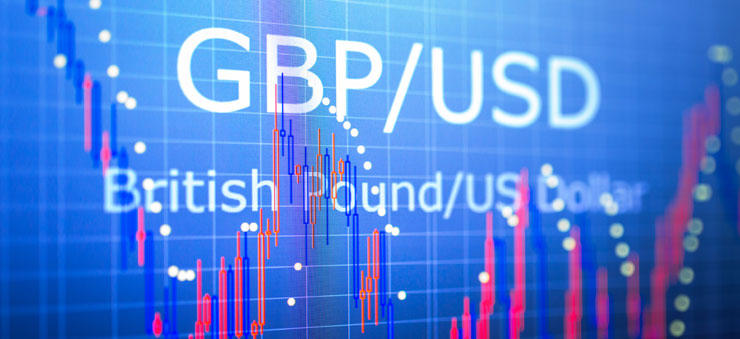GBP/USD Steady as Brexit Impacts UK Industry

Thursday morning saw the release of November’s figure of new car sales in the United Kingdom, which exhibited a decline of 1.3%. It’s not a surprising result seeing as it continues 2019’s trend of declining new car registrations. However, it does drive home that Brexit is having a significant impact on the UK economy.
Ian Plummer, Auto Trader’s Commercial Director, explained that Brexit was hurting the UK industry as well. Manufacturers are under a lot of pressure in this climate. The pound’s value is unstable, and no one knows what trading regulations will look like in the future.
The investors’ shaky confidence in the pound led to the GBP/USD holding steady, despite weaker-than-expected US economic data. The GPB/USD was trading at $1.3130 on Thursday morning.
Pound supported by Conservative lead in the polls
The market is still holding on to hope when it comes to the pound. UK opinion polls show that the Conservative Party is still in the lead. Thursday’s poll averages showed the Conservatives in the lead with 43%, followed by the Labour Party with 33%.
According to Jim Reid, a Deutsche Bank analyst, the pound has received some support from investors. They hope the Conservatives will win the elections, which should lead to Parliament more smoothly ratifying the Withdrawal Agreement. The result would be less uncertainty in the short-term of how Brexit would proceed.
Market sentiment was very positive regarding PM Boris Johnson’s Conservatives winning, so much so that the pound had risen by 1.5% against the US dollar. It also reached the highest level against the euro since May 2017.
US dollar flat despite underperforming economic data
The US dollar remained flat against the pound and other major currencies. This is despite the fact that the ISM non-manufacturing reports and the ADP employment figure underperformed forecasts.
Investors were quick to overlook the data. Instead, they focused on the US dollar as a safe-haven asset. This is amid continued worries over the issues that continue to plague the trade negotiations between the United States and China.
According to Reuters, China stated that the tariffs should be lowered if the two countries reach a phase one deal. However, the two sides haven’t made much progress and seem to be stuck in talks over “core issues of concern.” These include the Hong Kong protests and how China is treating their Uighur Muslim minority.
In fact, on Wednesday, China warned the United States that bilateral cooperation could suffer. This is in response to US legislation demanding a stronger reaction to how Beijing is treating Uighurs in Xinjiang.
Despite these issues, President Donald Trump stated on Wednesday that talks were proceeding very well. A Chinese source also told Reuters that both leaders had discussed reaching a deal. The source also said, “officials are now finishing the work.”
GBP/USD could slide on the back of US nonfarm payrolls
On Friday, the US nonfarm payrolls figure for November will be released. It is expected to increase to 180,000 from 128,000. December’s Michigan consumer sentiment index will also be released tomorrow. It is expected to decline slightly to 96.5 from 96.8.
If the two figures come in as expected, it would be a sign that the US economy is starting to improve. This would increase market confidence and lead to gains for the US dollar.
The pound, on the other hand, will be mainly driven by politics at least up until the December 12 elections. Essentially, any sign that the Labour party is gaining on the Conservatives will put pressure on the pound.

